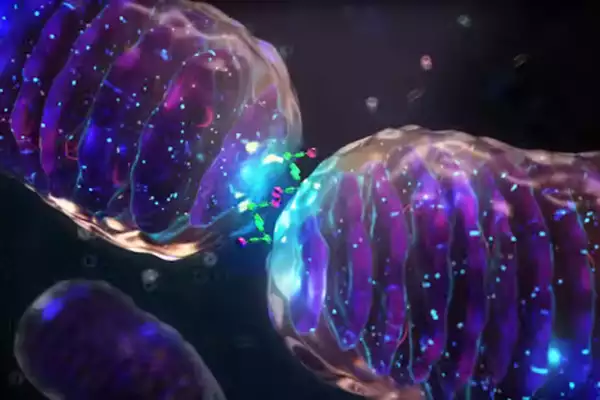Parkinson’s Disease research has recently revealed that manipulating a specific protein, Drp1 (Dynamin-related protein 1), can restore mitochondrial function and protect neurons, offering hope for new therapeutic approaches.
Role of Drp1 in Mitochondrial Dynamics:
- Function of Drp1: Dynamin-related protein 1 (Drp1) regulates mitochondrial division, aiding in the maintenance of mitochondrial mobility and quality control.
- Impact of Excess Drp1 Activity: Overactivity of Drp1 leads to excessive mitochondrial division, resulting in fragmented mitochondria with impaired function.
Research Findings:
- Inhibiting Drp1: Studies indicate that reducing Drp1 activity can restore mitochondrial function and protect neurons, offering a potential treatment approach for Parkinson’s disease.
- Toxin-Induced Damage: Environmental toxins like manganese can disrupt mitochondrial function, leading to cell damage and progression of neurodegenerative diseases.
About Parkinson’s Disease:
- Parkinson’s disease is a neurodegenerative disorder characterized by the death of brain cells responsible for movement control.
- Discovery: First described in 1817 by a British physician in “An Essay on the Shaking Palsy.”
- Prevalence: Second most common neurodegenerative disease globally, affecting over 10 million people.
- Symptoms: Characterized by tremors and movement difficulties due to dying brain cells responsible for movement control.
- Impact of Toxins: Environmental toxins and toxic proteins contribute to mitochondrial fragmentation and dysfunction, exacerbating the disease. For example, manganese exposure is linked to Parkinsonism.
- Inheritance: mtDNA is inherited maternally, leading to diseases being passed from mother to child.
Mitochondria and their Role:
- Function: Mitochondria are cellular organelles that produce ATP (adenosine triphosphate), the cell’s main energy source.
- Dynamics: Mitochondria are dynamic, changing in size, number, and location to meet cellular demands.
- Structure: Contain their own circular DNA (mtDNA) and are involved in energy production and protein synthesis.
Functions:
- Energy Production: Sites of aerobic respiration, essential for cellular energy.
- Genetic Material: Contain circular DNA (mtDNA), RNA, ribosomes, and proteins necessary for protein synthesis. mtDNA is used for tracing genetic lineage.
Mitochondrial Dysfunction in Parkinson’s Disease
- Impairment: Disruptions in mitochondrial dynamics can lead to cell dysfunction and death.
- Toxic Factors: Environmental toxins and disease-related proteins can cause mitochondrial fragmentation, impairing their function.
- Hallmark: Accumulation of toxic protein aggregates within cells is a key feature of Parkinson’s.
Other Key Facts:
- Mitochondrial dysfunction can also lead to other genetic disorders.
- Mitochondrial Replacement Therapy (MRT) is being explored to prevent maternal transmission of these diseases.
Mitochondrial Replacement Therapy (MRT):
Ref: Source
| UPSC IAS Preparation Resources | |
| Current Affairs Analysis | Topperspedia |
| GS Shots | Simply Explained |
| Daily Flash Cards | Daily Quiz |
Frequently Asked Question:
What is the function of Drp1 in mitochondria?
Drp1 regulates mitochondrial division, maintaining mobility and quality control.
What is the impact of excess Drp1 activity?
Overactivity leads to fragmented mitochondria with impaired function.
How can reducing Drp1 activity benefit neurons?
It can restore mitochondrial function and protect against damage.
What environmental toxin can disrupt mitochondrial function?
Manganese has been shown to disrupt mitochondrial function.
How can manipulating Drp1 offer hope for Parkinson’s disease?
Studies suggest that inhibiting Drp1 can protect neurons and offer potential treatment options.





